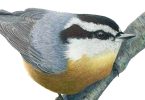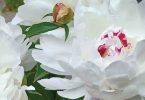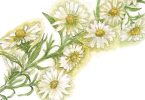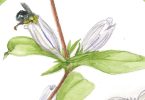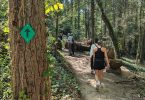By Suzanne Wodek
Antennaria solitaria, commonly known as pussytoes, is an herbaceous perennial wildflower in the aster family. Antennaria (Latin for antenna) resembles an insect’s antennae, and solitaria refers to its single flowering head per stem. Typically found in forests or woodlands, this plant prefers full sun or light shade and average to dry, well-drained, acidic soil. It will flourish in poor soil that contains sand, clay or rocky material. It does not do well in fertile soils, particularly if drainage is poor.
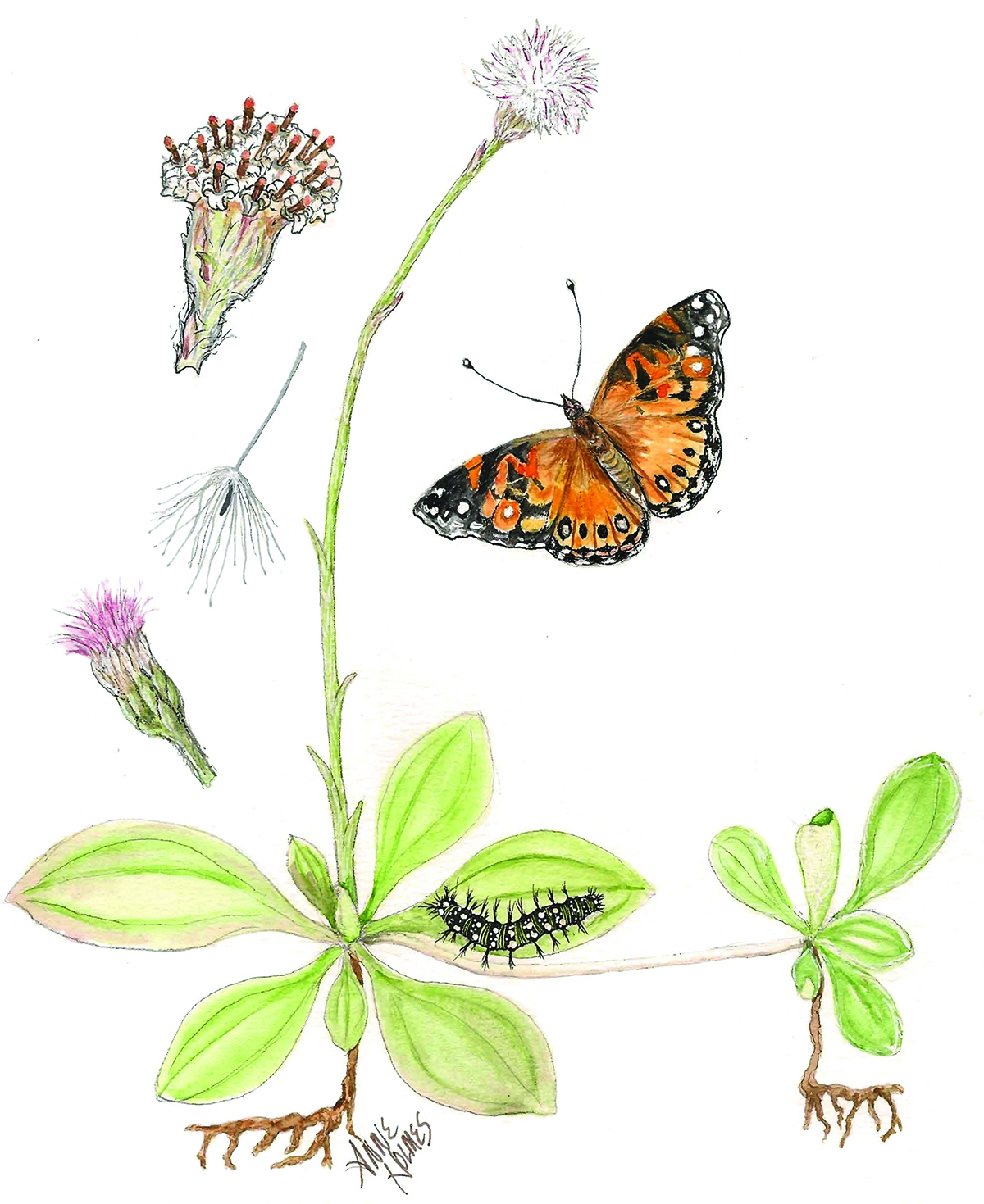
Antennaria solitaria. Anne Holmes, artist
The flowers look like tiny cat’s feet, thus the name. Small 1” to 2” flowers are white to pale purplish and tube-shaped and flower on a 4” to 5” stalk. The plant is useful as a groundcover in shady, dry places. It spreads by runners. New growth tends to be white and changes to dark green over time. This plant is dioecious, meaning the male (staminate) and female (pistillate) flowers are on different plants. Parts of the plant are poisonous, so deer, rabbits and other small animals won’t touch them. There are no known diseases or insect pest issues. The Gardens’ collection also has Antennaria neglecta and plantaginifolia.
Pussytoes support the American Lady (Vanessa virginiensis) larvae and the butterfly feeds on flower nectar almost exclusively.
Botanical Gardens, located at 151 W.T. Weaver Boulevard, is a nonprofit organization housing a collection of plants native to the Southern Appalachian Mountains. Admission is free, but donations are appreciated and memberships are encouraged. Membership benefits include a discount of 10 percent on purchases in the gift shop, an extensive collection of gardening and nature books in the Cole Library that members can check out (excluding the reference collection), our quarterly New Leaf newsletter, and tours and programs at a reduced rate. The Visitor Center and Gift Shop is open daily 11 a.m. to 3 p.m. The Gardens are open from sunrise to sunset. Find more information at AshevilleBotanicalGardens.org.

